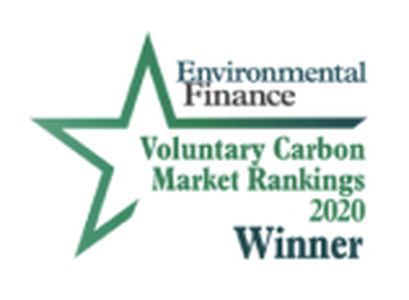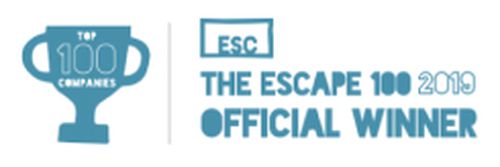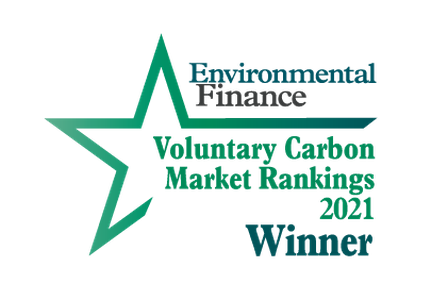Companies such as Microsoft, Marks and Spencer and Philips have set a high benchmark for climate leadership by committing to reducing emissions to net zero while sourcing 100% renewable energy, putting a price on carbon and contributing to the UN Sustainable Development Goals. But if you think that achieving such ambitious and impactful targets is only for the largest, high profile, corporates, think again.
And if you think that climate-leading companies sit back once these goals have been achieved, also think again. Enter stage: the increasingly sophisticated, sustainable, expanding business.
These businesses begin by asking: how will this programme make our employees proud to work for us? How will it help us to stand out among our competitors? How will it allow us to both save money and create new business opportunities? And how can we measure the impact on communities in our supply chain? We spoke to three of our clients who have already started responding to these questions, to discover what becoming carbon neutral means to them.
Commercial Group is an award-winning business services company based in the UK and has been certified CarbonNeutral® since 2007. If you are currently sitting in an office, Commercial could have supplied everything you can see. We spoke to Andrew McKenzie, Senior Sustainability Executive.
Fetzer Vineyards is a sustainable pioneer in the wine industry from Northern California focused on becoming net positive by 2030. Fetzer Vineyards became the first U.S. wine company certified CarbonNeutral certified by Climate Impact Partners as a “natural next step” to their already ambitious sustainability strategy. We spoke to Josh Prigge, Director of Regenerative Development.
CHEP rents pallets and reusable plastic containers (RPCs) to food, consumer goods and retail companies around the world. With 138 years in business, more than 14,500 employees and more than 500,000 collection points, CHEP has the potential to make a significant impact with its share and reuse model. CHEP supplies customers with a CarbonNeutral pallet and in some countries the entire product portfolio is CarbonNeutral. We spoke to Iñigo Canalejo Lasarte, Sustainability Director, Europe, Africa, India and the Middle East.
These three companies highlighted some of the elements of their CarbonNeutral programmes which have been vital to their success.
1. Driven from the top
According to Prigge, the philosophy of the company’s founder, Barney Fetzer, was that earth-friendly practices produce better grapes, which in turn produce better wine. Board-level commitment was also important to Commercial, whose co-founding Director was inspired to take action after watching Al Gore’s An Inconvenient Truth.
2. A big part of the company’s story
For many companies, becoming certified CarbonNeutral is a big part of their climate strategy, but it is still only one part of it. For Commercial, becoming CarbonNeutral was one of the very first steps the company took in its journey, purchasing offsets to reduce emissions to net zero while reducing emissions operationally. The company’s approach quickly matured to one where it closely tracks emissions and continually seeks opportunities to eliminate them, reducing its carbon intensity by million pound revenue by 80% between 2006 and 2015, despite increasing its revenue by 250% and doubling its staff.
For CHEP, the company’s product-as-a-service model combined with its sustainability programme and customer collaboration reduces carbon dramatically, so it was only one small step further to become CarbonNeutral.
3. Transforming relationships with customers
Becoming CarbonNeutral serves as a demonstration to customers that the company is fully committed to tackling climate change. Commercial works with international companies such as H&M and Sky, which have set ambitious climate targets and seek suppliers with strong sustainability credentials. As a supplier to these businesses, being a CarbonNeutral company allows Commercial to stand out from the competition.
Similarly, Iñigo Lasarte states that CHEP uses carbon neutrality “as a value driver and a differentiator in the value that we can bring to our customers.” Through an independent study, CHEP has shown that customers reusing CHEP’s pallets and RPCs saved 1.4 million trees, more than 12,000 megalitres of water, 1.3 million tonnes of waste and 2.3 million tonnes of CO2 when compared to pallets which are not part of a pooling solution. In this way, CHEP has a unique position in the supply chain that enables the company to have an impact on its customers’ environmental impacts.
CHEP’s customers can choose the carbon project they invest in when purchasing CarbonNeutral® pallets to ensure it aligns with their own sustainability strategy, but Iñigo’s advice to other companies with a CarbonNeutral offering is to keep it simple for customers. To this end, CHEP has made its entire product portfolio 100% CarbonNeutral in regions where this is particularly relevant for its customers, for example in CHEP Nordics.
4. Bringing employees on board
Publicising the company’s climate action is an important part of both customer retention and employee engagement. Like CHEP and Commerical, Fetzer Vineyards has a dedicated page on its website to explain why it is important to offset emissions as a company and to detail the projects in which the company invests.
Fetzer Vineyards employees are proud that the company has achieved CarbonNeutral status, and this is in part due to staff involvement in the programme. Fetzer Vineyards’ “RE3” team, which stands for Revitalise, Regenerate and Restore, is made up of staff from every sector of the business who get together once a month to advance sustainability projects on site, for example a bike-share programme and an on-site vegetable patch.
Similarly, Commercial’s Green Angels programme challenges employees to deliver long-lasting transformational change to the business. Through this programme, cycling, recycling and “living walls” initiatives have been introduced, further reducing the company’s footprint. Commercial also holds a popular corporate social responsibility (CSR) day every year, which promotes the company’s initiatives while enabling a free exchange of ideas.
5. Looking for ways to innovate
Climate leading companies are constantly looking for ways to further reduce emissions. Not only has Commercial switched to sourcing 100% renewable energy, but in 2013 the company deployed innovative hydrogen-fuelled light commercial vans on its fleet, alongside electrified vehicles. But the company is not stopping there and is currently investigating the introduction of an internal carbon price and new system for reducing business travel emissions.
Indeed, for many companies, a large part of the carbon footprint comes from transportation, and this is also true for CHEP. Due to its scale and close proximity to customers, CHEP has been able to collaborate with around 170 companies worldwide to share transport, eliminating empty truck miles. This action alone has thus far saved 35,000 tonnes of CO2 and 35 million kilometres in trips. In addition, CHEP’s engineers worked to reduce the carbon footprint of the company’s latest CarbonNeutral® pallet by over 30%, making it lighter, more easily stackable and fabricating it from 100% recycled plastic.
6. Ensuring the credibility of the programme
When company reputation, customer retention and staff loyalty are at stake, companies of all sizes recognise that their climate actions need to hold up to scrutiny. The three companies we spoke to all emphasised the need for a robust and credible approach as well as the importance of the “stamp” of CarbonNeutral®, which demonstrates that they have followed The CarbonNeutral Protocol and have reduced emissions in accordance with the World Resources Institute (WRI) Greenhouse Gas Protocol.
Iñigo finally commented: “I wake up in the morning and I am proud to work for a sustainable business.” There are many reasons why companies of all sizes are setting bold climate targets and achieving carbon neutrality, from future proofing the business, to catalysing internal efficiencies, and inspiring customers and staff to take action. These companies are setting a standard for others to follow by reaching and maintaining net zero emissions and are using the achievement to take advantage of new business opportunities. Many of our clients are now asking “how can we do more?”
Small businesses will soon be able to quickly and cost-efficiently measure their footprint and become certified as CarbonNeutral through our new online Climate Action Hub. Look out for the announcement in October 2017.
Latest News

New test article 2023
A dummy article to test title issue.
Read more
Test article
This is an example of a test article.
Read more
Natural Capital Partners and ClimateCare become Climate Impact Partners
Natural Capital Partners and ClimateCare become Climate Impact Partners and sets goal of delivering 1 billion tonnes of emission reductions by 2030.
Read moreThe Latest Insights From
Climate Impact Partners

Busting Carbon Offsetting Myths
10 myths around net zero and carbon offsetting busted
Read more
Test article foreign lang with plug-ins
This is an example of a test article.
Read more
Innovation in Carbon Markets: the Good, the Bad, and the Ambiguous
As carbon markets grow and innovate how can Web 3.0 be harnessed in a positive way to build scale and impact?
Read more










